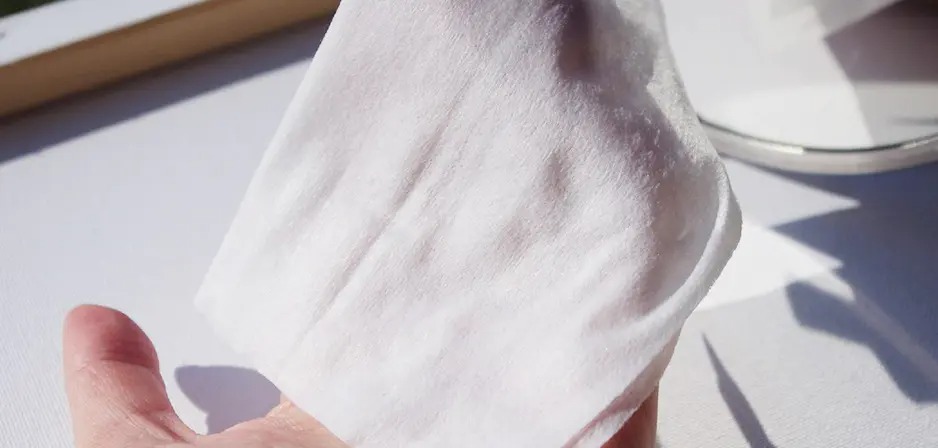Founded in 2022, Hangzhou Shunlong Nonwovens Technology Co., Ltd. is a professional China nonwoven fabric manufacturer and non-woven raw material factory
In the modern household cleaning market, Nonwoven Fabric Wet Wipe and Dry Wipe have gradually become indispensable cleaning products. These products not only meet the daily cleaning needs of households with their convenience and efficiency, but also promote the rapid development of the industry through continuous innovation in technology and functions. With the enhancement of consumers' health awareness, the upgrading of cleaning habits and the promotion of environmental protection trends, the market potential of Nonwoven Fabric products is being rapidly released.
Globally, household cleaning needs are undergoing profound changes. Traditional cleaning methods are gradually being replaced by multifunctional, disposable cleaning products, and Nonwoven Fabric Wet Wipe and Dry Wipe are typical representatives of this change. Wet wipes products (Wet Wipe) have become the main force in kitchen cleaning, bathroom care, children's products cleaning and other scenarios due to their ready-to-use and disposable convenience and multifunctional characteristics. Dry wipes products (Dry Wipe) are widely used in cleaning operations of various materials such as furniture, home appliances and glass due to their strong adsorption and compatibility with a variety of cleaning liquids.
The continuous advancement of technology is one of the core driving forces for the rapid development of Nonwoven Fabric Wet Wipe and Dry Wipe. In terms of production technology, nonwoven fabric materials have achieved a dual improvement in water absorption and durability by adopting polymer fiber technology. For example, some new nonwoven fabric wet wipe products can lock more liquid during use to ensure cleaning effect while keeping the fiber from breaking easily. These technological advances have made wet wipes perform better in heavy cleaning tasks, such as cleaning kitchen grease or deodorizing pet homes. At the same time, the adsorption capacity of Dry Wipe products has been significantly optimized, which can not only easily remove dust and fine particles, but also avoid cleaning liquid residue on the surface, thereby improving the overall cleaning effect.
Functional innovation is another highlight of Nonwoven Fabric products that stand out in the market competition. In recent years, many brands have upgraded ordinary wet wipes to high-value products with sterilization, deodorization and even skin care effects by adding fungicides, natural extracts or other functional ingredients. For example, some Nonwoven Fabric Wet Wipes designed for sensitive skin users feature alcohol-free and fragrance-free formulas, which not only ensure cleaning ability but also avoid irritation to the skin. In response to the special needs of family hygiene, some wet wipes also have the functions of rapid disinfection and long-term antibacterial, which are especially favored by families with children and pets. In the field of Dry Wipes, the research and development of multifunctional dry wipes is also continuing to advance. In addition to the traditional functions of absorbing water and wiping, reusable and environmentally friendly dry wipes products have emerged on the market to meet consumers' pursuit of low-carbon life.
Under the general trend of sustainable development, the production of Nonwoven Fabric Wet Wipe and Dry Wipe has also paid more and more attention to environmental protection. Traditional wet wipes products have been criticized by environmental protection organizations for containing plastic ingredients, and the application of new degradable nonwoven fabrics has effectively solved this problem. Many brands have launched wet wipes and dry wipes products made of plant fibers, which can not only be naturally degraded, but also reduce carbon emissions during the production process. For example, the wet wipes launched by some internationally renowned brands use bamboo fiber as the main raw material, which is not only soft to the touch, but also performs well in environmental protection tests. As consumers' demand for environmentally friendly products continues to rise, the market share of such green products is also growing steadily.
In addition to technical and environmental factors, changes in consumer habits have also promoted the popularity of Nonwoven Fabric products. The impact of the epidemic has made the importance of household cleaning unprecedentedly important, and consumers' demand for efficient, convenient and versatile cleaning products continues to rise. According to market data statistics, the global sales of Nonwoven Fabric Wet Wipe and Dry Wipe have increased by more than 40% in the past five years, especially driven by e-commerce platforms. This growth trend is more obvious. The popularity of online sales channels not only makes it easier for consumers to obtain diversified products, but also provides small and medium-sized brands with opportunities to expand the market.
In addition, the trend of market segmentation also provides more innovative directions for Nonwoven Fabric products. For example, maternal and child care wipes have become the choice of young parents due to their high safety and mild formula, while Dry Wipe designed for pets has the special function of removing pet hair and odor, and is very popular among pet-raising families. This product customization strategy for different user groups has further broadened the market coverage and enhanced consumer loyalty to the brand.
The innovative potential of Nonwoven Fabric Wet Wipe and Dry Wipe in the household cleaning market is still huge. From technical optimization, functional expansion to environmental protection transformation, these products will continue to provide consumers with more efficient and environmentally friendly cleaning solutions. At the same time, with the further release of market demand and the improvement of the global distribution network, Nonwoven Fabric products will occupy a more important position in the field of household cleaning, injecting a steady stream of power into the development of the industry.


 English
English 日本語
日本語 русский
русский Español
Español






